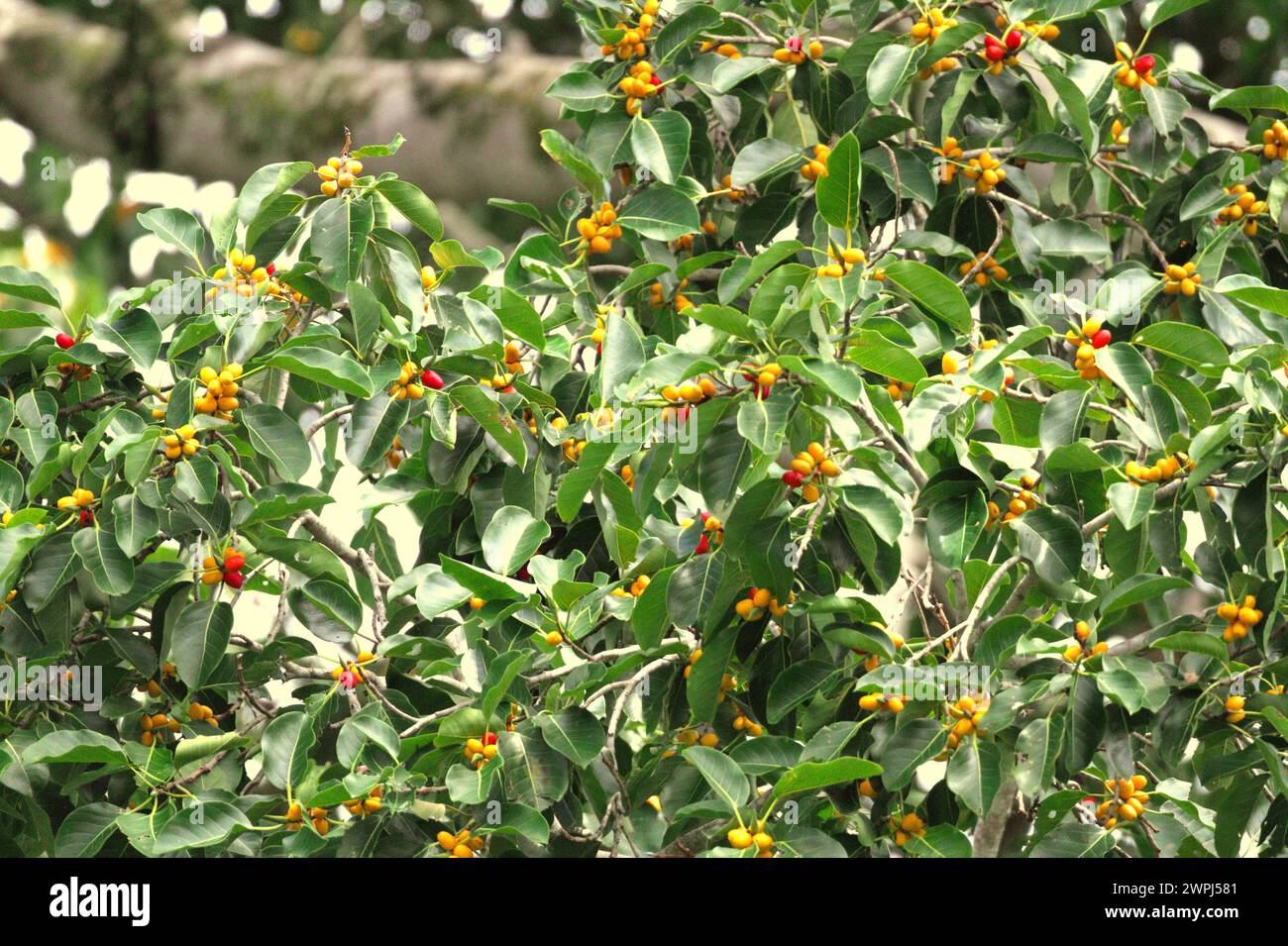Fruits and leaves of a large fig tree in a vegetated area at the foot of Mount Tangkoko and Duasudara (Dua Saudara) in Bitung, North Sulawesi, Indonesia. The International Union for Conservation of Nature (IUCN) concludes that rising temperatures have led to—among others—ecological, behavioral, and physiological changes in wildlife species and biodiversity. "In addition to increased rates of disease and degraded habitats, climate change is also causing changes in species themselves, which threaten their survival," they wrote in a publication on IUCN.org.

Image details
Contributor:
Pacific Imagica / Alamy Stock PhotoImage ID:
2WPJ581File size:
51.6 MB (3.3 MB Compressed download)Releases:
Model - no | Property - noDo I need a release?Dimensions:
5202 x 3464 px | 44 x 29.3 cm | 17.3 x 11.5 inches | 300dpiDate taken:
27 January 2012Location:
Bitung, North Sulawesi, IndonesiaMore information:
This image could have imperfections as it’s either historical or reportage.
Fruits and leaves of a large fig tree in a vegetated area at the foot of Mount Tangkoko and Duasudara (Dua Saudara) in Bitung, North Sulawesi, Indonesia. The International Union for Conservation of Nature (IUCN) concludes that rising temperatures have led to—among others—ecological, behavioral, and physiological changes in wildlife species and biodiversity. "In addition to increased rates of disease and degraded habitats, climate change is also causing changes in species themselves, which threaten their survival, " they wrote in a publication on IUCN.org. A previous report by a team of scientists led by Marine Joly, based on research conducted since 2012 to 2020, has revealed that the temperature is indeed increasing by up to 0.2 degree Celsius per year in Tangkoko forest._Back in 2022, as quoted by Newsweek, Dr. Nicholas Pattinson (University of Cape Town) had warned that "much of the public perception of the effects of the climate crisis is related to scenarios calculated for 2050 and beyond. Yet the effects of the climate crisis are current and can manifest not just within our lifetime, but even over a single decade.”